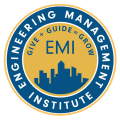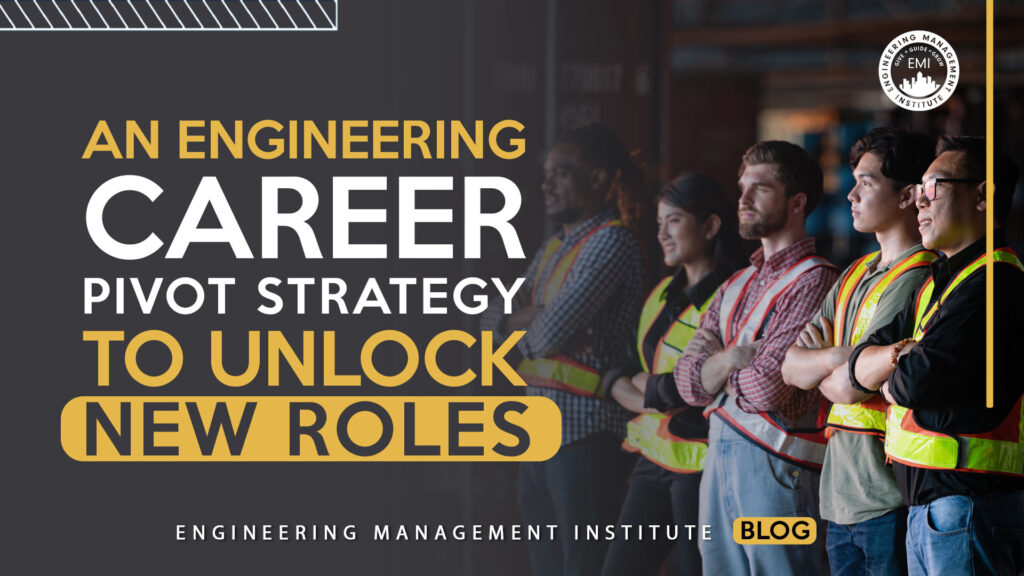Most engineers don’t make career moves on a whim. They map out paths, consider trade-offs, and search for data. But when it comes to executing an engineering career pivot strategy, especially toward something less defined, many fail to make meaningful progress, and some totally fail.
It’s not due to a lack of courage. It’s because the data feels… missing. Or at least, not obvious. Unlike choosing the right fastener or simulation method, a career change for engineers doesn’t always come with test cases or historical benchmarks. That uncertainty can paralyze even the most methodical engineers.
As someone who began in engineering, spent a decade recruiting engineers, and now coaches them full time, I see a consistent gap: engineers often treat their careers like projects but forget to collect and analyze the right inputs. They know how to test designs but not how to test a new direction.
Let’s change that.
Why Engineering Careers Get Stuck
Most engineering professionals follow a predictable arc. Entry-level roles bring technical mastery. Promotions lead to project ownership. Eventually, there’s an invitation (or pressure) to manage people. But what if management doesn’t feel right? Or what if you outgrow your niche and want to explore adjacent functions like product management, sales engineering, or supply chain strategy?
This is where the data starts to blur. Performance reviews focus on delivery, not direction. Your metrics look good, but they don’t tell you if you’re fulfilled. And company organization charts rarely show what happens after “Senior Manager.” It doesn’t help either that many engineers have been told to be grateful for stability. So they stay. Not because it’s ideal, but because it’s the path of least resistance.
The Metrics That Actually Matter
Engineers are used to tracking what’s measurable: output, errors, timelines. But for a technical career transition, you need to start tracking a new kind of data. You need better data about yourself, your environment, and your future options.
Let’s start with self-assessment. What activities make you feel energized versus drained? Which meetings do you dread? What skills do people ask for your help with? These aren’t abstract feelings; they are repeatable behavioural indicators. They’re just as real as test results; you just haven’t been measuring them.
Next, gather feedback. Ask peers and mentors what they see as your top 3 strengths. If their answers surprise you, pay attention. Often, others spot your hidden edge before you do.
Track patterns. Keep a log for 30 days: what tasks you do, how long they take, and how they make you feel. After a month, analyze the data. You’ll spot trends.
Finally, analyze the job market. What roles are rising in demand? Which ones intersect with your current skill set? A recent LinkedIn report showed that roles in AI, data, and technical sales are growing fast and many engineers already have the foundation to move into them.
Career Experiments, Not Career Bets
A well-executed engineering career pivot strategy doesn’t start with a big leap. It starts with a small test. So once you’ve gathered enough insight, it’s time to stop theorizing and start testing.
Don’t resign tomorrow. Run a side experiment. Volunteer for a cross-functional initiative. Shadow someone in a role you’re curious about. My favourite: take on a short-term consulting project. Think of these as prototypes. They are low-cost, high-feedback opportunities.
I had a client, a mechanical engineer, who was burned out by long medical device manufacturing cycles. He didn’t love spreadsheets but whenever he talked about solving real problems for end users, he lit up. That was the clue. We reviewed his interests, and he consistently lit up talking about customer conversations. After a few networking calls and one test project, he pivoted into solutions engineering. He didn’t leave engineering. He just found a version that fit better.
My Take, After 15 Years in the Hiring World
I spent a decade recruiting engineers, and now I coach them. And here’s what I’ve learned: the people who make the best moves aren’t the most qualified; they are the most self-aware.
They treat their careers the way they treat their work: with curiosity, courage, and feedback. They don’t wait for certainty, they build it.
Most importantly, they don’t pivot alone. They ask good questions, they build relationships, and they track what’s working. That’s the essence of a data-driven career decision.
If you’re an engineer thinking about a change, you don’t need to know the full path. You just need to test the next step. Collect the data. Spot the patterns. Make the move.
And if you’ve already made a shift, I’d love to hear what helped you decide. What was the signal that stood out? What data made the difference?
About Nader Mowlaee:

Please leave your comments, feedback or questions in the section below.






